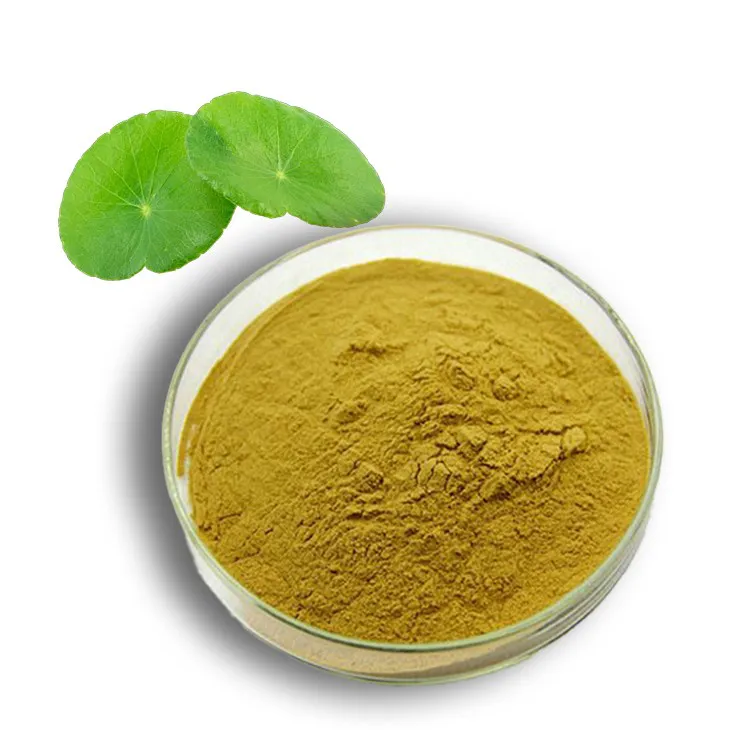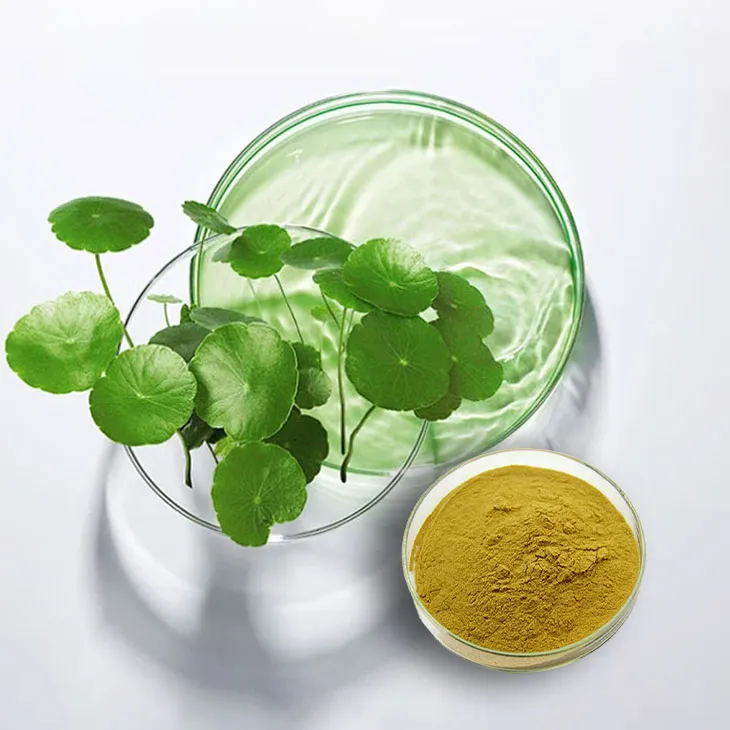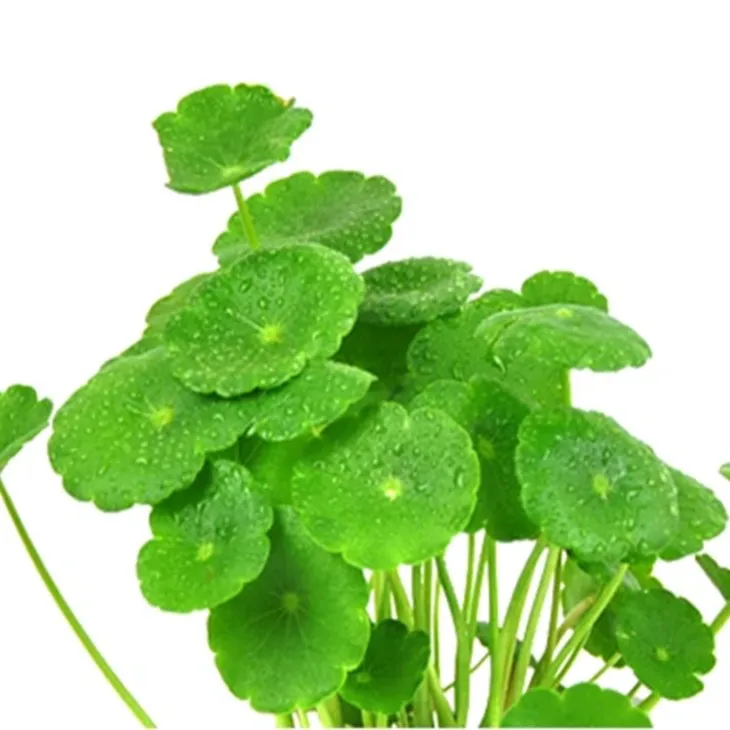- 0086-571-85302990
- sales@greenskybio.com
Extract Centella asiatica extract by steam distillation.
2024-11-28

1. Introduction to Centella asiatica
Centella asiatica, also known as Gotu Kola, is a herbaceous plant that has been used in traditional medicine for centuries. It is native to Asia, Africa, and Australia. This plant is highly regarded for its numerous health - promoting properties.
Centella asiatica contains a variety of active substances, such as triterpenoids (including asiaticoside, madecassoside, etc.), flavonoids, and phenolic acids. These components are believed to contribute to its anti - inflammatory, antioxidant, wound - healing, and neuroprotective effects.
In the field of cosmetics, Centella Asiatica Extract is often used in skin - care products. It can help improve skin elasticity, reduce the appearance of scars, and soothe irritated skin. In the pharmaceutical industry, it is being explored for its potential in treating various diseases, including venous insufficiency, Alzheimer's disease, and skin ulcers.

2. Steam distillation procedure
2.1. Preparation of materials
First, fresh or dried Centella asiatica plants are collected. The plants should be of high quality, free from diseases and contaminants. If using dried plants, they need to be properly stored to maintain their active components.
Before the steam distillation process, the plants are usually cut into small pieces. This increases the surface area, which is beneficial for the extraction process.
2.2. Setting up the steam distillation apparatus
A typical steam distillation apparatus consists of a distillation flask, a condenser, a receiver, and a heat source. The distillation flask is where the Centella asiatica plant material is placed. The condenser is used to cool the vapor produced during distillation, converting it back into a liquid form. The receiver is used to collect the distilled extract.
The heat source can be a heating mantle, a Bunsen burner, or an electric heater. It is important to ensure that the heat is evenly distributed during the process to avoid local overheating, which may damage the active components.
2.3. Steam distillation process
Step 1: Place the cut Centella asiatica plant material into the distillation flask. Add a suitable amount of water to the flask. The ratio of plant material to water can vary depending on the experimental conditions, but a common ratio is about 1:5 (plant material: water).
Step 2: Connect the distillation flask to the condenser and the receiver. Make sure all the connections are tight to prevent vapor leakage.
Step 3: Start heating the distillation flask. As the water in the flask is heated, it turns into steam. The steam passes through the plant material, carrying the volatile components of Centella asiatica with it.
Step 4: The vapor - laden steam then enters the condenser, where it is cooled. As a result, the vapor condenses back into a liquid, which is collected in the receiver.
The distillation process usually takes several hours, depending on the amount of plant material and the efficiency of the apparatus. It is important to monitor the process throughout to ensure that the temperature and pressure are within the appropriate range.

3. Challenges in steam distillation extraction
3.1. Maintaining the integrity of active components
Some of the active components in Centella asiatica, such as triterpenoids, are relatively unstable under high temperature and pressure conditions. During steam distillation, there is a risk of these components being degraded or transformed, which may reduce the efficacy of the extract.
To overcome this challenge, the temperature and pressure during distillation need to be carefully controlled. Lowering the distillation temperature and reducing the distillation time can be considered, but this may also affect the extraction yield.
3.2. Selectivity of extraction
Steam distillation may not be highly selective in extracting only the desired components from Centella asiatica. Along with the active components, other non - active or less - desired substances may also be extracted. This can lead to a complex extract mixture, which may require further purification steps.
One possible solution is to combine steam distillation with other extraction methods or purification techniques. For example, after steam distillation, chromatographic techniques can be used to separate and purify the desired components.
3.3. Yield of extraction
The yield of Centella Asiatica Extract obtained by steam distillation can be relatively low. This may be due to incomplete extraction of the active components from the plant material or loss of components during the extraction process.
To improve the extraction yield, pretreatment of the plant material can be carried out. For example, enzymatic hydrolysis can be used to break down the cell walls of the plant, making it easier for the active components to be released during distillation. Additionally, optimizing the distillation parameters such as the ratio of plant material to water, temperature, and time can also help increase the yield.

4. Future prospects of Centella Asiatica Extract obtained via steam distillation
4.1. In the cosmetics industry
As consumers become more conscious about natural and effective skin - care products, the demand for Centella asiatica extract in the cosmetics industry is expected to grow. Steam - distilled Centella asiatica extract can be used in a wide range of products, including creams, lotions, and serums. It has the potential to be further developed as a key ingredient in anti - aging, anti - inflammatory, and wound - healing skin - care products.
Research is also ongoing to explore new formulations and delivery systems for Centella asiatica extract in cosmetics. For example, encapsulation techniques can be used to protect the active components and improve their stability and penetration into the skin.
4.2. In the pharmaceutical industry
The pharmaceutical industry is constantly looking for new natural products with therapeutic potential. Centella asiatica extract obtained by steam distillation may have applications in the development of drugs for various diseases. For example, its anti - inflammatory and neuroprotective properties make it a potential candidate for treating neurodegenerative diseases such as Parkinson's and Alzheimer's.
However, more pre - clinical and clinical studies are needed to fully understand the pharmacological effects of the extract and to develop safe and effective drugs. In addition, standardization of the extraction process is crucial to ensure the quality and consistency of the extract used in pharmaceutical research and development.
4.3. In the food and beverage industry
There is also potential for the use of Centella asiatica extract in the food and beverage industry. It can be added to functional foods or beverages as a natural health - promoting ingredient. For example, it can be incorporated into herbal teas or energy drinks for its antioxidant and stress - relieving properties.
However, regulatory approval and safety assessment are required before its widespread use in the food and beverage industry. Issues such as the maximum allowable dosage and potential interactions with other food components need to be addressed.
FAQ:
What are the main active substances in Centella asiatica?
Centella asiatica contains a variety of active substances such as asiaticoside, madecassoside, asiatic acid and madecassic acid. These substances are believed to have various beneficial effects on health, including anti - inflammatory, antioxidant, and wound - healing properties.
What is the principle of steam distillation for extracting Centella asiatica extract?
The principle of steam distillation is based on the fact that the volatile components in Centella asiatica can be vaporized along with steam. When steam is passed through the plant material, the volatile substances are carried away with the steam. Then, through condensation, the vapor is converted back into liquid, separating the extract from the non - volatile parts of the plant.
What are the typical challenges in steam distillation extraction of Centella asiatica extract?
One of the main challenges is the potential degradation of some active substances due to high temperature and long extraction time. Also, incomplete extraction may occur if the steam flow rate or extraction conditions are not optimized properly. Another challenge is the separation of the extract from the condensed water and other impurities after distillation.
How can we overcome the challenges in steam distillation extraction of Centella asiatica extract?
To overcome the problem of substance degradation, we can try to optimize the extraction time and temperature. For example, using a lower temperature for a relatively longer time may reduce the degradation. To ensure complete extraction, proper adjustment of steam flow rate, particle size of the plant material and extraction time is necessary. For the separation issue, advanced separation techniques such as centrifugation or filtration can be used after distillation.
What are the future prospects of Centella asiatica extract obtained by steam distillation in the pharmaceutical industry?
In the pharmaceutical industry, the Centella asiatica extract obtained by steam distillation has great potential. It can be further studied for the development of new drugs, especially for anti - inflammatory and wound - healing drugs. With the increasing demand for natural products in drug development, this extract may play an important role in the future. It may also be used in the development of new drug delivery systems due to its unique chemical composition.
Related literature
- Steam Distillation and Its Applications in Natural Product Extraction"
- "Centella asiatica: Chemical Constituents and Their Therapeutic Potentials"
- "Advances in the Extraction of Bioactive Compounds from Medicinal Plants: A Case of Centella asiatica"
- ▶ Hesperidin
- ▶ Citrus Bioflavonoids
- ▶ Plant Extract
- ▶ lycopene
- ▶ Diosmin
- ▶ Grape seed extract
- ▶ Sea buckthorn Juice Powder
- ▶ Fruit Juice Powder
- ▶ Hops Extract
- ▶ Artichoke Extract
- ▶ Mushroom extract
- ▶ Astaxanthin
- ▶ Green Tea Extract
- ▶ Curcumin
- ▶ Horse Chestnut Extract
- ▶ Other Product
- ▶ Boswellia Serrata Extract
- ▶ Resveratrol
- ▶ Marigold Extract
- ▶ Grape Leaf Extract
- ▶ New Product
- ▶ Aminolevulinic acid
- ▶ Cranberry Extract
- ▶ Red Yeast Rice
- ▶ Red Wine Extract
-
Peppermint Extract Powder
2024-11-28
-
Dandelion Root Extract
2024-11-28
-
White Peony Extract
2024-11-28
-
Feverfew Extract
2024-11-28
-
Echinacea Extract
2024-11-28
-
Almond Extract Powder
2024-11-28
-
Lotus leaf extract
2024-11-28
-
American Ginseng Root Extract
2024-11-28
-
Green coffee bean Extract
2024-11-28
-
Diosmin
2024-11-28





















